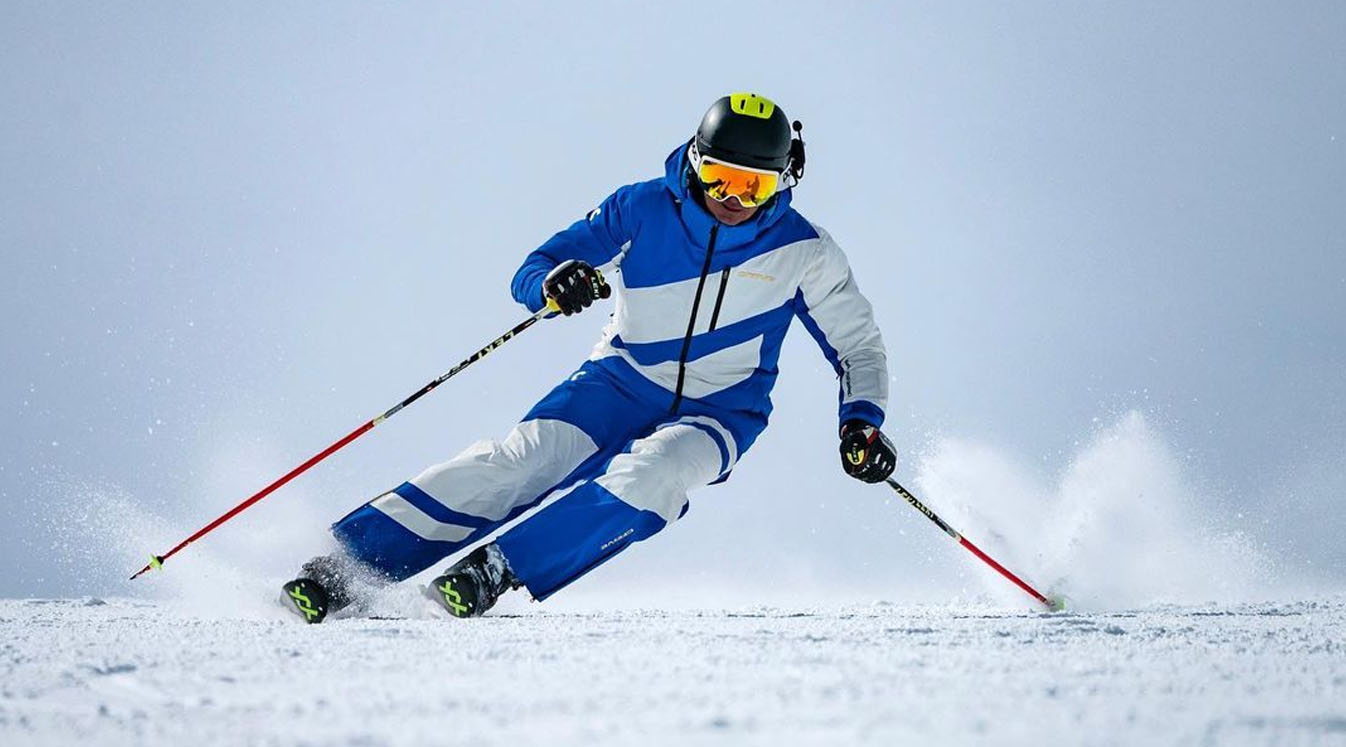
Skiing is a thrilling and exhilarating winter sport loved by adventure seekers and nature enthusiasts around the world. From gliding down powdery slopes to tackling challenging terrains, skiing offers an adrenaline rush like no other. But there’s more to skiing than just the thrill factor. In fact, there are plenty of unbelievable facts about this popular winter activity that will leave you in awe.
In this article, we will delve into 20 fascinating and mind-boggling facts about skiing that will showcase the rich history, incredible achievements, and surprising aspects of this beloved winter sport. So, whether you’re a seasoned skier or someone who has never set foot on snow, get ready to be amazed by these unbelievable facts about skiing!
Key Takeaways:
- Skiing has a rich history dating back to 5000 BC, with ancient cave paintings in Norway depicting early skiers. It’s a sport that has stood the test of time and continues to captivate people worldwide.
- Skiing offers a full-body workout, improves mental well-being, and is deeply ingrained in the culture of countries like Norway and Austria. It’s not just a sport – it’s a way of life!
Skiing dates back to 5000 BC.
Did you know that skiing has been around for thousands of years? Ancient cave paintings in Norway depict early skiers, suggesting that people have been gliding through snow-covered terrain for millennia.
The word “ski” comes from the Old Norse word “skíð.”
The term “ski” originates from the Old Norse word “skíð,” which means a piece of wood. It’s fascinating to think that this simple word has now become synonymous with a thrilling winter sport enjoyed worldwide.
There are more than 1,000 ski resorts around the world.
From the snow-capped peaks of the Alps to the majestic slopes of the Rocky Mountains, there are over 1,000 ski resorts spread across the globe. Each offers its unique charm, terrain, and après-ski activities.
Skiing can be traced back to the Telemark region in Norway.
The birthplace of modern skiing as we know it today can be traced back to the Telemark region in Norway. It was here that Sondre Norheim revolutionized skiing techniques in the 19th century by introducing the Telemark turn.
The highest ski resort in the world is located in the French Alps.
Val Thorens, nestled in the French Alps, holds the title for the highest ski resort globally, sitting at an impressive altitude of 2,300 meters (7,545 feet) above sea level.
Skiing became an official Olympic sport in 1936.
The Winter Olympics in Garmisch-Partenkirchen, Germany, marked the official inclusion of skiing as a competitive sport in Since then, it has become one of the most anticipated events during the Winter Games.
Norway has won the most medals in Olympic skiing history.
As a testament to their skiing prowess, Norway has accumulated the highest number of medals in Olympic skiing history, dominating disciplines such as cross-country skiing, ski jumping, and alpine skiing.
Mount St. Elias in Alaska has the longest ski run.
Towering at 5,489 meters (18,009 feet), Mount St. Elias in Alaska boasts the longest ski run in the world, providing skiers with an exhilarating descent that spans over 13 miles.
The world’s fastest skier reached a speed of 157.9 mph.
In 2016, Italian skier Ivan Origone set the world record for the fastest speed reached on skis, clocking an astounding 157.9 mph during a race in Vars, France.
Austria has the most ski resorts per capita.
When it comes to ski resort density, Austria takes the crown. With its stunning alpine landscapes and world-class facilities, it’s no wonder that skiing is deeply ingrained in the Austrian culture.
The first ski lift was introduced in 1936.
Prior to the introduction of ski lifts, skiers relied on their own efforts to ascend the slopes. It wasn’t until 1936 that the first chairlift was installed in Sun Valley, Idaho, revolutionizing the way we access ski terrain.
Skiing boosts your mood and mental well-being.
Aside from the physical benefits, hitting the slopes can do wonders for your mental health. Skiing releases endorphins, reduces stress levels, and provides a refreshing escape in the pristine beauty of snowy mountains.
There are four main types of skiing: alpine, cross-country, freestyle, and nordic.
Skiing encompasses various disciplines, each with its unique characteristics. Alpine skiing focuses on downhill speed, cross-country involves long-distance endurance, freestyle showcases impressive tricks and jumps, and nordic combines cross-country with ski jumping.
The world’s largest ski lesson took place in China.
In an attempt to promote skiing, China broke the world record for the largest ski lesson ever conducted in A total of 1,050 participants hit the slopes in the snowy city of Harbin.
Skiing is an excellent form of exercise.
Engaging in skiing provides a full-body workout, engaging muscles in your legs, core, and upper body. It helps improve balance, flexibility, and cardiovascular health while burning a significant amount of calories.
The first snowboarding competition took place in 1981.
Snowboarding, a close relative of skiing, gained popularity in the late 20th century. The first-ever snowboarding competition, known as the “National Snow Surfing Championships,” took place in 1981 at Vermont’s Suicide Six ski resort.
There is a museum entirely dedicated to skiing.
Located in St. Anton, Austria, the Ski Museum showcases the rich history of skiing, including vintage equipment, artifacts, and an in-depth look into the evolution of this beloved winter sport.
Skiing has its unique language.
Skiing has its own set of terms and phrases. From carving and moguls to gondolas and black runs, understanding the lingo adds to the immersive experience of being part of the skiing community.
Nordic countries have the highest percentage of skiers.
Given their snowy landscapes and skiing traditions, it’s no surprise that Nordic countries like Norway, Sweden, and Finland have the highest percentage of skiers among their population.
Skiing helps to improve overall balance and coordination.
With the constant need to adjust body movements on uneven terrain, skiing is an excellent activity for improving balance and coordination, both on and off the slopes.
So there you have it – 20 unbelievable facts about skiing that showcase the rich history, breathtaking achievements, and incredible experiences that make skiing such an extraordinary sport. Whether you’re a fan of gliding down the slopes or simply fascinated by winter sports, skiing never ceases to amaze both participants and spectators alike.
Conclusion
In conclusion, skiing is not only a thrilling winter sport but also an activity rich in history and interesting facts. From its origins in Scandinavia to the development of ski resorts worldwide, skiing has become a popular pastime for people of all ages and skill levels. Whether you are a beginner on the slopes or an experienced skier, these unbelievable facts about skiing add an extra layer of fascination to this exhilarating sport. So, the next time you hit the slopes, remember these facts and impress your fellow skiers with your knowledge of skiing trivia.
FAQs
1. How old is skiing?
Skiing has been around for thousands of years and is believed to have originated in Scandinavia around 6,000 years ago.
2. What are the different types of skiing?
There are several types of skiing, including alpine skiing (downhill skiing), cross-country skiing, freestyle skiing, and ski jumping.
3. How fast can skiers go?
Professional skiers can reach speeds of over 90 miles per hour during downhill races, while recreational skiers typically reach speeds of around 30-40 miles per hour.
4. How many ski resorts are there worldwide?
There are approximately 3,000 ski resorts worldwide, located in various countries across the globe.
5. What is the highest ski resort in the world?
The highest ski resort in the world is located in the Chacaltaya Mountains in Bolivia, at an elevation of 17,785 feet.
6. Is skiing dangerous?
Like any sport, skiing comes with inherent risks. However, with proper equipment, training, and adherence to safety guidelines, skiing can be enjoyed safely by millions of people worldwide.
7. How many people ski worldwide?
It is estimated that around 60 million people worldwide participate in skiing each year.
8. What is the oldest ski resort?
The oldest ski resort still in operation is located in Norway and dates back to 1140 AD.
Was this page helpful?
Our commitment to delivering trustworthy and engaging content is at the heart of what we do. Each fact on our site is contributed by real users like you, bringing a wealth of diverse insights and information. To ensure the highest standards of accuracy and reliability, our dedicated editors meticulously review each submission. This process guarantees that the facts we share are not only fascinating but also credible. Trust in our commitment to quality and authenticity as you explore and learn with us.


